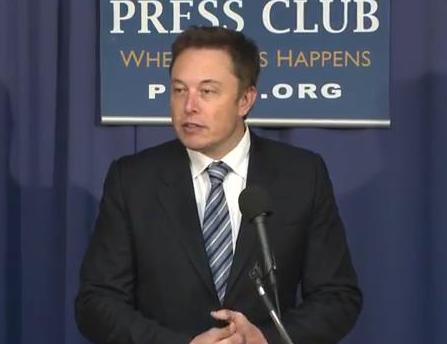
The reusability of rocket hardware could soon remove the most prohibitive aspect of space access – its cost – says SpaceX CEO Elon Musk.
On Friday, Musk spoke at the National Press Club in Washington following the first successful “soft landing” of the company’s Falcon 9 rocket boost stage during a test flight. Although the rocket landed in heavy seas off Florida and was destroyed, Musk reported that the craft’s legs deployed and it reached zero velocity at sea level, as intended.
“It’s a really huge milestone for SpaceX and certainty for the space industry,” he said. “No one has ever soft landed a liquid rocket boost stage before, and I think this bodes very well for achieving reusability.”
Musk, who says he assessed the likelihood of a successful mission at 40 or 50 per cent, says reusability is the key to drastically bringing down the cost of space missions. He hinted that the savings would not be insignificant.
“If we can recover the stage intact and relaunch it, the potential is there for a truly revolutionary impact in space transport costs,” he said.
“There’s the potential there for, ultimately, a hundred-fold improvement in the cost of access to space,” Musk posited to the room of reporters from news services such as Aviation Week, Bloomberg News and Defense Daily.
The SpaceX CEO offered some detail of his theory. The cost of propellant, he says, represents about .3% of the rocket. If a mission costs $60-million, for instance, the cost of propellant is only $200,000. Most of the cost of a space mission lies in the hardware, which his always been unrecoverable. SpaceX has been testing rockets with water landings until they are confident they can land with accuracy, at which time they will transition to land.
Musk says that while a rocket stage recovered from the ocean would likely take a couple months to refurbish for flight, a landing on land would be almost instantly reusable. “In principal we should be able to refly it the same day,” he said. The flights, he said, should also become much more accurate. Musk said Friday’s mission landed with a one-mile radius of its target, but most test flights have landed within less than a metre of their intended target.
“In principal, we should be able to land with the accuracy of a helicopter,” he said.
The SpaceX CEO admitted that a potential hurdle to reusability might be convincing customers that a rocket that has already been flown would be safe, and that a demonstration reflight would be a likely scenario.
Musk was modest in his assessment of his company’s accomplishments to date. “What SpaceX has done thus far is evolutionary, but not revolutionary,” he said.
Below: Elon Musk at the National Press Club…
______________________________________________________________________________________________________________
Leave a Reply
You must be logged in to post a comment.




 Share
Share Tweet
Tweet Share
Share




Comment